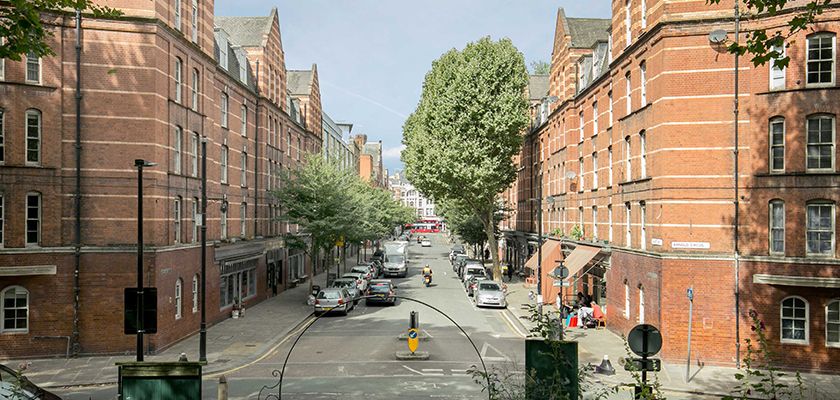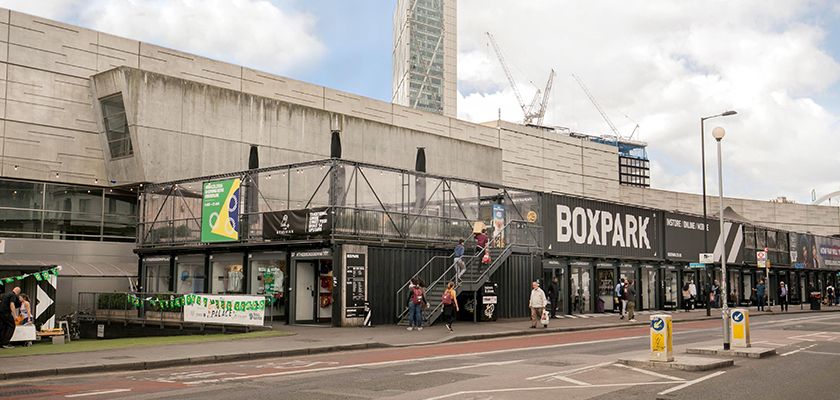It is thought that the name Shoreditch has its origin from the name "Sewer Ditch", in reference to a drain or watercourse in what was once a boggy area. It may have referred to the headwaters of the river Walbrook, which rose in the Curtain Road area. Shoreditch was a suburb of the City of London, centred on Shoreditch Church (dedicated to St Leonard) at the crossroads where Shoreditch High Street and Kingsland Road are crossed by Old Street and Hackney Road.
Known also as the Old North Road, Shoreditch High Street was a major coaching route to the north from the City. The east–west course of Old Street–Hackney Road was also probably originally a Roman Road, connecting Silchester with Colchester, bypassing the City of London to the south.
In 1576 James Burbage built the first playhouse in England, known as "The Theatre", on the site of the Priory Some of Shakespeare's plays were performed here and at the nearby Curtain Theatre. In 1599 Shakespeare's Company literally moved the timbers of "The Theatre" to Southwark at expiration of the lease to construct The Globe. The Curtain continued performing plays in Shoreditch until at least 1627.

During the 17th century, wealthy traders and Huguenot silk weavers moved to the area, establishing a textile industry centred to the south around Spitalfields. By the 19th century Shoreditch was also the focus of the furniture industry.
In the 19th and early 20th centuries Shoreditch was a centre of entertainment to rival the West End and boasted many theatres and music halls to include: The National Standard Theatre, The Shoreditch Empire and The Royal Cambridge Music Hall.
In 1965 Shoreditch was incorporated into the much larger London Borough of Hackney . In the last 20 years Shoreditch has become a popular and fashionable part of London. More recently, during the second 'dot-com' boom, the area has become popular with British web technology companies who base their head offices around Old Street. These companies have gravitated towards Old Street Roundabout, giving rise to the term "Silicon Roundabout" to describe the area.
To accommodate this influx of new residents and workers, former industrial buildings have been converted to offices and flats, while Curtain Road and Old Street are notable for their clubs and pubs which offer a variety of venues to rival those of the West End. Art galleries, bars, restaurants, media businesses and the building of the Hackney Community College campus are further features of this transformation.

The combination of it’s proximity to the city of London and the reopening of stations at Shoreditch and Hoxton with direct connections to Canary Wharf has also led to more city professionals moving to the area.
This rapid gentrification has led to a rise in demand for residential properties and subsequent development to accommodate this with most recently the area of South Shoreditch (bordering Bishopsgate and the City of London) undergoing an enormous transformation with various high rise multi purpose buildings being built to cater for the growing demand.
Shoreditch benefits from 3 stations with the following connections:
Shoreditch benefits from a very wide range of bus routes including:
Shoreditch and the neighbouring Haggerston areas benefit from several small and 2 relatively large green open spaces: